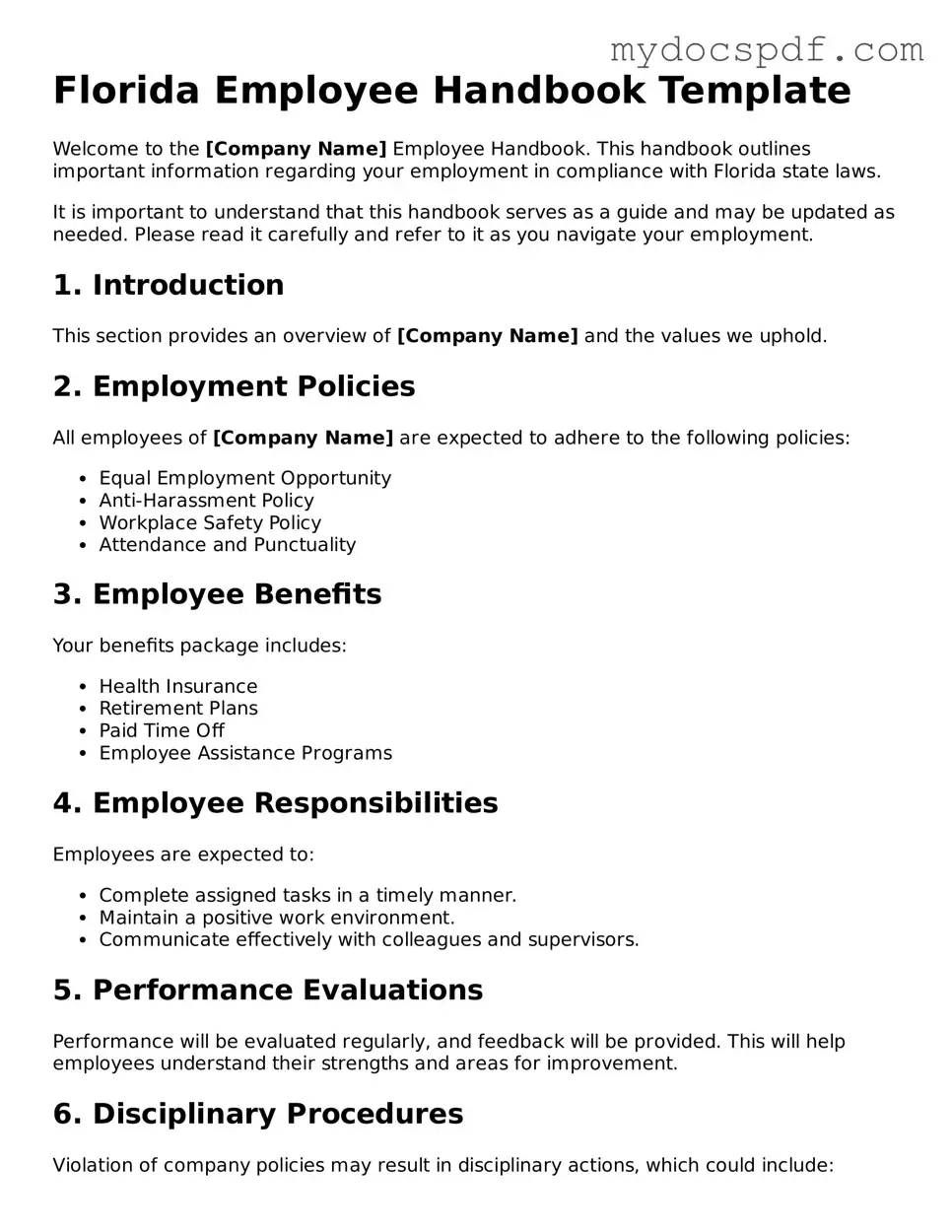Florida Employee Handbook Template
Welcome to the [Company Name] Employee Handbook. This handbook outlines important information regarding your employment in compliance with Florida state laws.
It is important to understand that this handbook serves as a guide and may be updated as needed. Please read it carefully and refer to it as you navigate your employment.
1. Introduction
This section provides an overview of [Company Name] and the values we uphold.
2. Employment Policies
All employees of [Company Name] are expected to adhere to the following policies:
- Equal Employment Opportunity
- Anti-Harassment Policy
- Workplace Safety Policy
- Attendance and Punctuality
3. Employee Benefits
Your benefits package includes:
- Health Insurance
- Retirement Plans
- Paid Time Off
- Employee Assistance Programs
4. Employee Responsibilities
Employees are expected to:
- Complete assigned tasks in a timely manner.
- Maintain a positive work environment.
- Communicate effectively with colleagues and supervisors.
5. Performance Evaluations
Performance will be evaluated regularly, and feedback will be provided. This will help employees understand their strengths and areas for improvement.
6. Disciplinary Procedures
Violation of company policies may result in disciplinary actions, which could include:
- Verbal Warning
- Written Warning
- Suspension
- Termination
7. Acknowledgment of Receipt
Employees must sign an acknowledgment form to confirm receipt and understanding of the handbook.
By signing below, you acknowledge that you have received, read, and understood the [Company Name] Employee Handbook.
Employee Name: ___________________________
Date: ____________________________________
For any questions or clarifications regarding this handbook, please contact [HR Contact Information].
